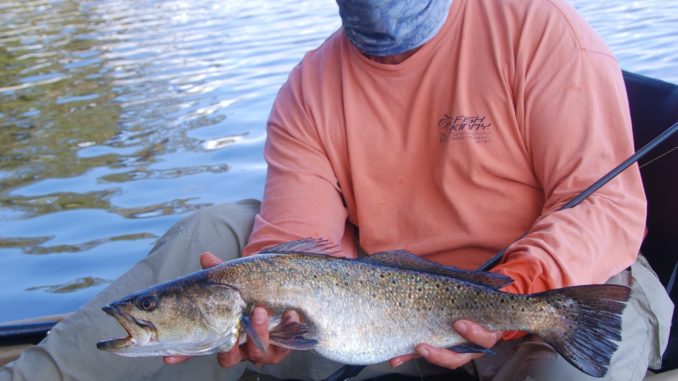
Look for clear water, avoid still water, change lure colors and cover a lot of ground in your search for spring specks.
As March rolls into April, changes begin in the inshore waters of South Carolina that bring a smile to the faces of fishermen. Shrimp, menhaden and yearling fry begin showing up in creeks, and speckled trout become more active and feed more aggressively.
But spring often emerges in phases, often fading back to winter in the blink of an eye. Warming water retreats and gives way to winter conditions, taking the trout with it. Trout may tend to roam more, moving up and back with the weather as well as back and forth with the food chain.
Though there may be no real tricks to catching trout, learning a few seasonal patters can help anglers find and catch speckled trout in the early spring.
Guide John Spitzmiller of Mount Pleasant advises fishermen to get an early start on trout by starting at first light or finishing at last light, tempt trout with topwater baits
“Trout are such low-light feeders,” said Spitzmiller. “In maybe the first 30 minutes and the last 30 minutes of daylight, I’ve seen some stuff happen with trout that will just blow your mind, where the fish are just so active hitting topwater that it doesn’t matter what you throw, you’re going to catch fish — almost to a point we can’t even see our line, it’s so dark at night. Sun’s gone down, just barely daylight left, and the bite turns on.”
Because trout are visual feeders, Spitzmiller and other veteran fishermen seek out clear water. Even an area that may be murky or muddy during one tide cycle can clear up enough to be just right on the next tide.
“If you’re not getting bites and you’re in an area where you feel like there are fish and the water’s muddy, move to another area,” he said. “There are times when I’ll move from one side of the creek to the other, and I’ll find that clarity I’m looking for and catch fish. And then an hour later, I can go back to where I started, and all of a sudden the water’s cleared up, and it’s gotten right and you can fish it again. So don’t be discouraged by muddy water. It just means you’re there at the wrong time.”
Water clarity isn’t an all-or-nothing proposition. Fishermen can weigh their chances of success by switching bait colors to something that shows up well in something less than clear water, a fairly common situation on the Stono River that guide John Koonce calls home.
“If the water’s a little bit stained, I’ll use a brighter-colored bait,” said Koonce. “Unlike bass fishing, if it’s dark, use a darker color. But around here, it seems like the bright colors, chartreuse, bright pink and candy corn grubs works pretty good when the water is stained. I think they can just see it better since they feed more by sight than by smell.”
Another of Koonce’s tricks early in the season is to use sound. Popping corks have long been a mainstay of fishermen to get trout to focus on the bait, and Koonce will adjust the cadence of sound based on the current he’s fishing.
“If the current is running real hard and I cast across current, I pop that thing a lot quicker and use it a lot more,” he said. “A lot of times, the more aggressive you pop that thing, the more aggressive the bite is. If I’m ripping that thing real fast, I’ll put an extra split-shot on there to keep the bait down a little bit deeper. On slack tides, I throw that thing out and just pop it three or four times, I’ll let it drift, pop it three or four times. It’s a pretty effective way at catching them, either in the fast-moving tide or when the tide’s moving kind of slow.”
Early in the spring, trout may very still be in their winter haunts. According to Mount Pleasant guide Jeff Yates, the 50-degree mark is a good rule of thumb for when trout will be deep and when they move.
“A lot of people fish their summer spots year-round, and they don’t catch anything because these fish move,” said Yates. “When the water is cold, the fish go deep. To catch them, you’ve got to go to deep, protected holes in the backs of the creeks. I’m talking 8 to 9 feet of water and fish down low.”
A deep hole in a creek may seem like a contradiction, but deep is a relative term as far as speckled trout are concerned. Finding a deep hole means finding the deepest spots in the relative vicinity. Often, that’s a ledge or drop-off.
“I like fishing docks, or rather, in-between docks,” Yates said. “The backside of a floating dock is usually the mark of the ledge. The front side is where it drops off. That’s where the Coastal Council says you can put your dock. If you’ve got a row of docks down a creek in a curve, it’s giving you the layout where the ledge is. I like to throw in between the docks. Let the bait sink back there and bring it out over that ledge, and let it drop off that ledge. That’s where you get your hit.”
The caveat, in Yates’ opinion, is it’s nearly impossible to find trout feeding in slack water.
“Like most of our inshore fishing, it’s basically a moving-water affair,” he said. “That’s the trick. When the tide goes slack, pretty much all fishing stops for about 30 to 45 minutes.
Lining up boat docks isn’t the only way to find places that might be holding trout. Guide John Ward of Kiawah Island said that the low end of the tide allows fishermen to scout out areas that might hold fish when the water is higher.
“If you’re not familiar with likely fishing spots, the best thing to do is ride around the area at low tide and make note of structure such as oyster piles, abandoned pilings, and drainage ditches,” said Ward.
Matching your lures to what trout are eating is also important; specks are known for eating large baits, but early in the year, they’re feeding on much-smaller forage.
“I fish the deeper holes with light line, 6-pound test, and use smaller soft plastics that either emit their own scent or with scent sprayed on,” said Ward. “Then, it’s a matter of casting across the breaks and bringing the bait back slowly across the drop trying to mimic a baitfish that’s been washed into the hole.”
DESTINATION INFORMATION
HOW TO GET THERE — Charleston is at the southern terminus of I-26, which along with US 17 is the major access from points in all directions. Popular public ramps include Remley’s Point off County Road 56 on the Wando River in Mount Pleasant; Shem creek Landing off SC 703 in Mount Pleasant; Wappoo Cut off SC 171 between West Ashley and James Island in Charleston.
BEST TECHNIQUES — Speckled trout will likely be in deeper holes and around channel breaks early in April. Fish will remain in tight schools and less active until water temperatures reach the upper 50s. Look around long points and the deep ends of docks and oyster bars, especially the first few hours of the outgoing tide. A soft-plastic shrimp or minnow-type bait fished under a popping cork works best when trout move into mid-depths around structure. A topwater bait or shallow-diving crankbait fished over oysters can be productive early or late, or all day on overcast days. Also, a weighted plastic bait bounced or drifted along the edges of dropoffs will work as the tide recedes or when colder water conditions persist.
FISHING INFO/GUIDES — Capt. John Koonce, Shoal Bandig Charters, 843-425-2939, www.shoalbandit.com; Capt. Johnny Spitzmiller, Ambush Inshore Charters, 843-971-0537, www.ambushinshorecharters.com; Capt. John Ward, Affinity chaters, 843-693-2460, www.affinitycharters.com; Capt. Jeff Yates, Tylo Knot Charters, 843-270-8956, www.inshorefishingcharleston.com; Cap. Dan Utley, Fishin’ Coach Charters, 843-368-2126, www.fishincoach.com; Capt. Tom Siwarski, Carolina Aero Marine Adventures, 843-327-3434, www.carolinaaeromarine.com. See also Guides and Charters in Classifieds.
ACCOMMODATIONS — Best Western Patriots Point, Mount Pleasant, 843-971-7070; Town and Country Inn & Conference Center, Charleston, 800-334-6660; LaQuinta Inn & Suites, Charleston, 843-556-5200.
MAPS — Maps Unique, 910-458-9923, www.mapsunique.com; Sealake Fishing Guides, 800-411-0185, www.thegoodspots.com.

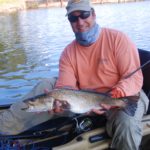
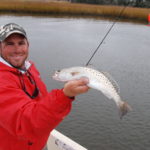
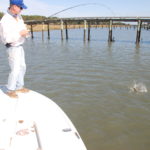
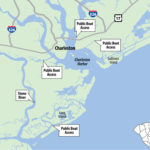




Be the first to comment